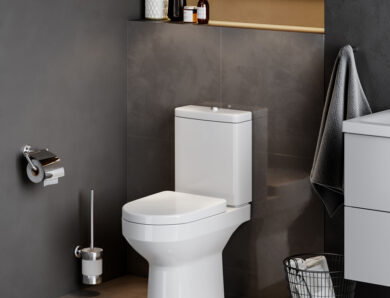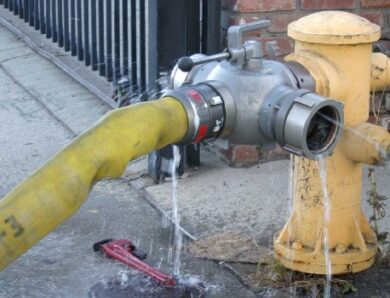Water pressure sensor in the water supply system: device, installation, regulation
In order to operate the autonomous water supply systems (in particular, pressure in the pipeline) could be adjusted automatically, use different technical devices, one of which is a water pressure sensor. This element of water supply systems, in which water is supplied from wells by means of pumping stations, allows not only to control the parameters of such systems, but also to manage their work. The water pressure sensor in the water supply system allows in automatic mode, without human intervention, switch pump stations on and off.
The pressure switch is designed to automatically control the on and off of water supply to the water supply system
Algorithm of work and purpose
Water pressure sensor (relay, pressure sensor) works according to the following algorithm:
- At that moment, when the taps open and the volume of fluid in the accumulator decreases, the water pressure in the water supply system decreases.
- When the pressure in the water supply system reaches the minimum allowable value, sensor contacts, which regulates this parameter, are closed.
- Closing the pressure sensor contacts starts the pump, which is responsible for supplying water from the well.
- When water is pumped from a well, the pressure in the water supply begins to increase.
- Once the water pressure in the water supply reaches the maximum allowable value, the sensor contacts open, which leads to the shutdown of pumping equipment.
Working in a similar mode, water pressure sensors allow you to keep the pressure of the liquid in the water supply at a constant level. If you do not use such a device in the pipeline, then the pump, water supply, will have to turn on or off manually. This not only will not maintain the water pressure in the system at a constant level, but can also lead to hydraulic shocks and idle pumping equipment.
Automation block, consisting of a pressure switch, manometer and fitting
Water pressure sensors, installed at one of the nodes of the water supply system, perform another important function - signal the current pressure and display data on its value on the control devices, the simplest of which is a pressure gauge.
So, installing the water pressure sensor (electronic or mechanical), ensure the stability of the water supply, and also protect the elements of its equipment from negative factors, such, example, as hydraulic shocks and the operation of the pump "dry".
Design features
As mentioned above, exist as mechanical, and electronic water pressure switches. In both cases, the main working body is the membrane, which acts as one of the walls of their internal capacity, into which water enters. Deviating under water pressure, the membrane affects other elements of the sensor, as a result, the device is triggered.
Diaphragm pressure sensor device
Elements, affected by the deflecting membrane, mechanical sensors have contacts, which when closing or opening turn on and off the pumping equipment. The electronic pressure sensor works on a slightly different principle. The deformation of the membrane in such a device is converted into a control electrical analog signal, which then intensifies, is digitized and enters the unit of automatic control of the pipeline.
Mechanical pressure sensors, which are also called contacts, used more often, than electronic. This is explained by the simplicity of the design of such a device, and its more affordable cost. In particular, regularly install mechanical water pressure sensors in heating and domestic water supply systems.
Device of household water pressure switch
The design of the mechanical sensor is:
- pipe branch, by means of which the device is connected to the elements of the pipeline;
- membrane;
- contact group;
- two springs of different diameters, by means of which the level of the greatest and minimum pressure is exposed, at which the device should work.
Pressure sensor in disassembled form
Spring of larger diameter, which is installed in sensors of mechanical type, determines the level of water pressure in the pipeline, at which the device will work and turn off the supply pump. The second spring is responsible for the lower limit of the sensor, and to be more precise, then the range of values, at an exit for which the sensor will work on inclusion and will start the pump, supplying water to the pipeline.
The design of mechanical sensors provides the ability to adjust the degree of compression of both springs. When compressing a spring of larger diameter, the value of water pressure increases, at which the device will work. If you compress the spring of smaller diameter harder, then the pressure difference between the trigger levels will increase.
The principle of regulation of the mechanical pressure sensor
Installation recommendations
If you decide to install a pressure sensor with your own hands, first read the information about it, how to do it right. Usually as a place to install a sensor or pressure switch choose that part of the water supply, which is located after the pump and the accumulator, before filtering. This is due to the fact, that this part of the water supply is characterized by smaller pressure jumps. It should also be borne in mind, that the operation of many models of water pressure control sensors is allowed only indoors. This must be stated in the instructions for such devices.
Special splitters and tees are used to install the sensors, which allow to connect the sensor to a water supply system by means of one mounting element, hydraulic accumulator and manometer. When installing the sensor, except for the tee, an additional adapter may be required, the purchase of which should be taken care of in advance. In any case, the scheme of connection to the water supply relay is determined by the design and technical characteristics of the latter.
Scheme of water supply from the well
Some models of sensors, placed under the moisture-proof case, can be installed directly on the water pump by means of the special union. Due to this design, sensors of this type are successfully operated together with pumping equipment inside a caisson or even a well..
After the mechanical part of the process of installing the relay or water pressure sensor is completed, it is necessary to connect the appropriate contact groups to the pump and ground the device. Choosing electrical cables to connect such sensors, the pump power must be taken into account in the first place, which operates in the system. So, when using pumping equipment, whose power is 2 kw, cables with a cross-section of at least should be used 2 mm 2.
Wiring diagram of the pressure switch
Once you have installed the water pressure switch with your own hands and made all the necessary connections, you can turn on the pump and check the operation of the entire system. About that, that it is functioning normally, will indicate an increase in pressure in it, which can be determined by the readings of the manometer.
self-tuning
Though, that in most cases the operating parameters of the differential pressure switch are already set by the manufacturers, situations may arise, when the adjustment procedure must be performed with your own hands. The optimal difference between the values of water pressure in the pipeline, at which the pump should be included and disconnected, should be 1 atm. The lower limit, at which the sensor works, is set as follows, to be on 0,2-0,5 bar less pressure, which can withstand the pump used.
Before you start adjusting the operating parameters of the sensor or relay with your own hands, it is necessary to check the pressure level in the accumulator. To do this, follow these steps:
- Disconnect all system elements from the mains and drain the water.
- Remove the side cover of the accumulator and check the pressure level in it, for which you can use a car compressor, equipped with a manometer.
- If the pressure level is less, than 1,5 atm, it is necessary to increase it, turning on the feed pump.
- If the pressure level is too high, it must be reduced, pressing the nipple.
Water pressure switch control diagram
After such check it is possible to start adjustment of the sensor, which is performed in the following sequence:
- All elements of the system are disconnected from the power supply and water is drained from it.
- After draining the water make sure, that the pressure gauge shows zero.
- Then turn on the pump and begin to fill the system with water.
- When switching off the pumping equipment, the values are recorded on the manometer, at which it happened.
- After that, start draining the water and when you turn on the pump also fix the pressure level.
- Disconnect the system elements from the power supply and remove the sensor cover.
- Loosen the nut, by means of which the degree of compression of a spring of small diameter is regulated.
- Using a nut to compress a large diameter spring, set the minimum pressure level, at which the sensor will work. This should be borne in mind, that the compression of this spring increases this parameter, and its weakening reduces.
- Fill the system with water again, then begin to drain it and fix the pressure level, when the pump turns on.
- If this value does not meet the required parameters, it is necessary to adjust once again the degree of compression of the large diameter spring.
- Changing the degree of compression of the spring of small diameter, set the maximum water pressure threshold, at which the pump will be switched off. When compressing such a spring, the difference between the thresholds of the pump increases, and when it weakens - decreases.
- Turn on the pump, filling the system with water, and record the pressure level, at which it will turn off.
- If the pressure level, at which the pump is switched off, does not meet the required parameters, re-adjust the degree of compression of the spring of small diameter. This procedure should be performed until then, while the required pressure difference, at which the pump is switched on and off, will not be achieved.
Regulating elements of the pressure switch RD-2
Self-adjusting mechanical pressure sensor, you can change the operating parameters of such a device, which were exhibited by the manufacturer. Doing so, it is possible, example, reduce the number of pump starts. At the same time, it should be borne in mind, that the difference in water pressure in the system in this case may increase, which negatively affects the reliability of the elements of the pipeline.
Performing self-adjustment of the sensor, the technical characteristics of the pumping equipment used should be taken into account.
To compensate for water pressure losses in the pipeline, the pump must create an excess pressure of 0,5 there is. Otherwise, you may face it, that the pump will run with overload, and this will lead to its rapid failure. Even if a factory-set sensor is used for water supply or home heating systems, it is necessary to check at least annually parameters of its work and if necessary to carry out its adjustment.
Many homemakers, guided by a natural desire to save, install a self-made water pressure sensor on water supply systems. In such cases, it should always be borne in mind, that to provide necessary reliability of work of a water supply system in a condition only devices, made in factory conditions. Use pressure switch to equip water pipes, made with their own hands, Of course, it is possible, but do it better in those cases, when the parameters of such a system and its reliability are not subject to very high requirements.


